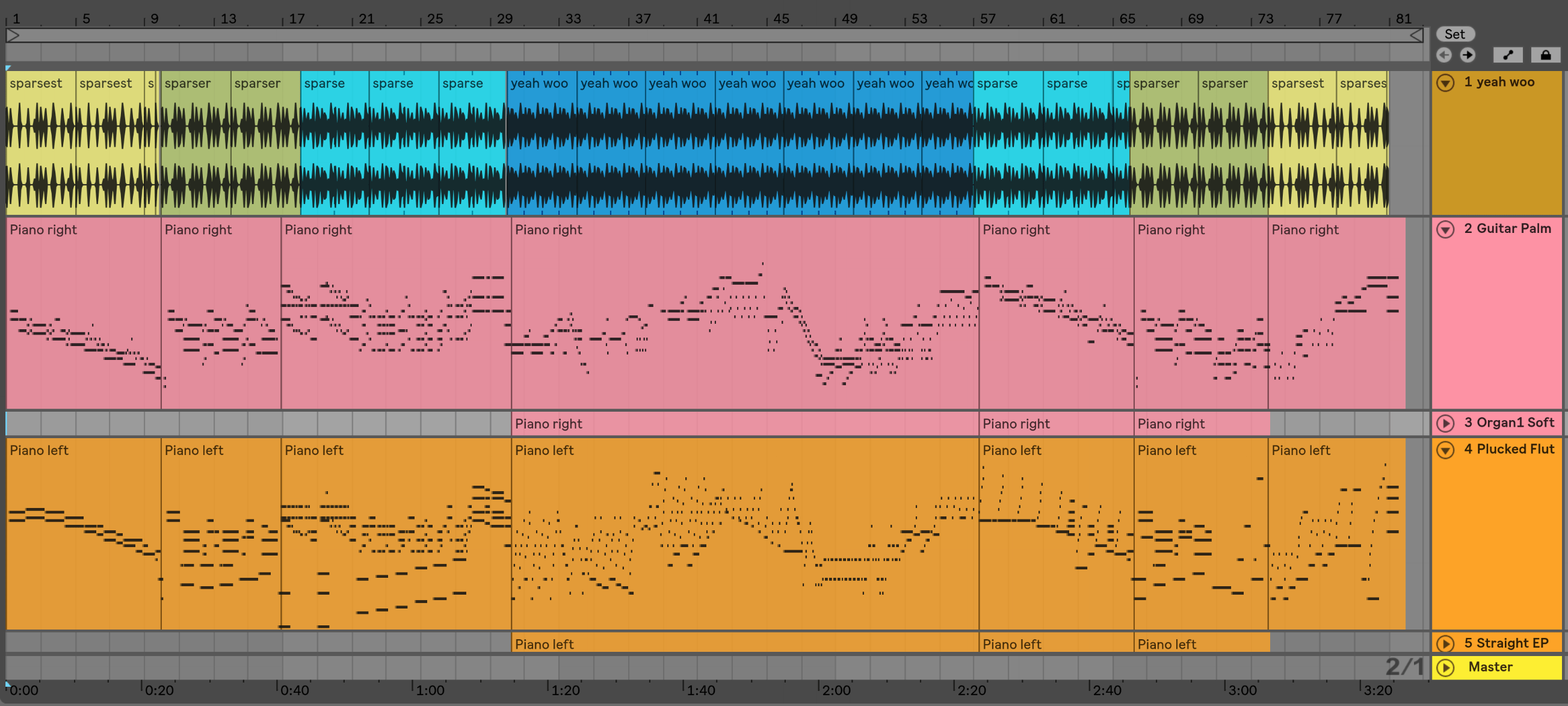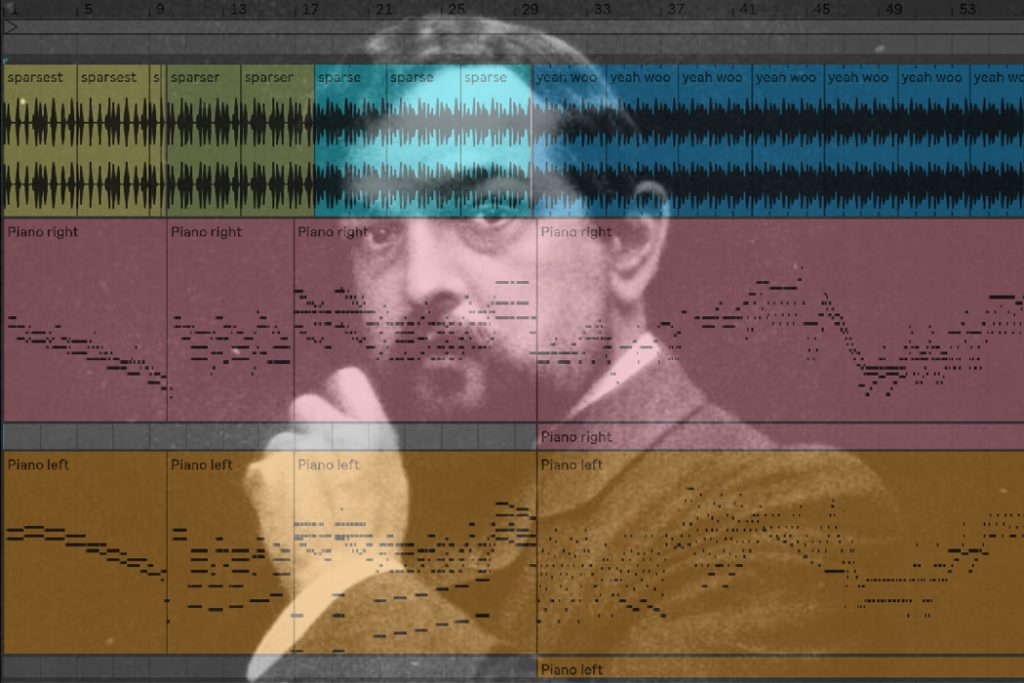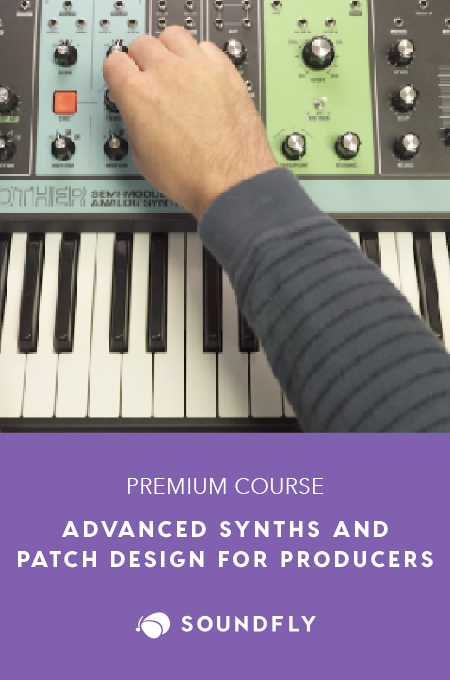
+ Master the tools and techniques of producing pro-level electronic music and audio in Ableton Live with Soundfly’s course, Intro to Music Production in Ableton Live.
This article originally appeared on Ethan Hein’s blog.
This video recently made the rounds on Facebook.
I was thinking about “Clair de Lune” and how strange and complicated the rhythm is. I was humming it to myself and couldn’t figure out where the downbeats were. I have previously used Ableton Live to help me learn a classical piece aurally, so I figured I would do the same thing with this one.
I found a MIDI version of the piece and brought it into Ableton Live. The MIDI file put the left and right hand of the piano on separate tracks, so I used separate instruments for each one: a palm-muted guitar for the right, and a synth pluck for the left.
For rhythm, I used the old reliable “Yeah Woo” break, pitched down for extra vibe.
I split the MIDI wherever I felt an intuitive phrase boundary and arranged my drum loops accordingly. I doubled the synths with softer and more sustained sounds in a few sections as well.

Hear the result:
Will Kuhn suggests that the rhythms of “Clair de Lune” are so weird because Debussy was trying to notate rubato. That sounds plausible to me. It turns out that when you quantize the piece over beats, it sounds very syncopated and hip. Live and learn.
As one commenter pointed out, though, “Clair de Lune” is in 9/8, so of course it’s going to sound strange over a 4/4 beat. However, for me, the 4/4 beat actually makes it sound less strange. I find 9/8 totally unnatural; I can count it deliberately but I haven’t internalized it intuitively. On the other hand, groups of triplets over 4/4 is a common sound in the African-descended American music, and I can feel it just fine.
So the piece makes more sense to me over “Yeah Woo” than it does in its intended meter.
Over on Facebook, Isaac Schankler pointed out that:
“The polyrhythm is cool but I’d say it actually obscures your understanding because the characteristic accent pattern is completely different.”
True. So I guess I’m not so much “understanding” the piece as I am creating a different piece of music using the same pitches and durations, but with a different rhythmic feel (one that I like better — sorry, Debussy).
I then did another remix in actual 9/8 using a drum groove I found on YouTube.
Which do you like better, the correct way or the 4/4 way?
*A bit of housekeeping: Soundfly’s got an all new online course that teaches you all of the tools to get started making pro-level music and audio using Ableton Live, one of the most versatile DAWs out there. Check out Intro to Music Production in Ableton Live here or sign up for our email list to stay up to date with new courses and offers.
Improve all aspects of your music making on Soundfly.
Subscribe to get unlimited access to all of our course content, an invitation to join our members-only Slack community forum, exclusive perks from partner brands, and massive discounts on personalized mentor sessions for guided learning. Learn what you want, whenever you want, with total freedom.




